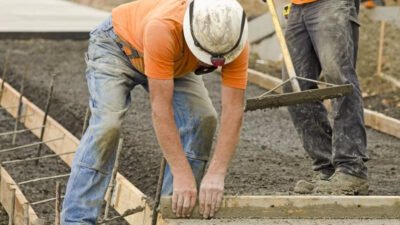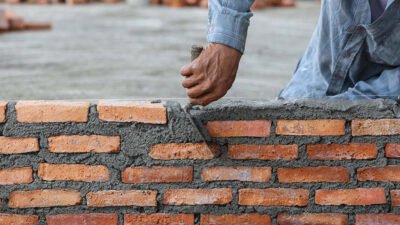Choosing the right access platform for indoor use is essential for safety, productivity, and efficiency. Whether you are maintaining lighting in a sports hall, conducting stock takes in a warehouse, or carrying out routine building maintenance, the right equipment will make all the difference. This comprehensive guide explores the growth of access platforms sales for indoor environments, highlighting their advantages, key features, and how to select the most suitable option for your needs.
Understanding Access Platforms for Indoor Use
Access platforms, also known as MEWPs (Mobile Elevating Work Platforms), are designed to safely lift personnel and equipment to elevated working areas. For indoor applications, considerations such as manoeuvrability, power source, working height, and floor loading are critical. The main types of access platforms suitable for indoor use include:
- Low-level platforms
- Scissor lifts
- Boom lifts (cherry pickers)
- Vertical mast lifts
- Podium steps and scaffold towers
Each type has unique benefits and is suited to different tasks and environments.
Key Factors When Choosing an Indoor Access Platform
Selecting the best access platform for indoor use involves considering several factors:
- Working Height: The maximum height you need to reach safely.
- Platform Capacity: The weight the platform must support, including personnel, tools, and materials.
- Power Source: Electric and battery-powered platforms are preferred indoors to avoid exhaust fumes.
- Compactness: The ability to navigate through doorways and tight spaces.
- Floor Loading: The platform’s weight and how it distributes load on sensitive indoor flooring.
- Noise Levels: Electric platforms are quieter, making them ideal for noise-sensitive environments.
Types of Access Platforms for Indoor Use
Low-Level Platforms
Low-level platforms are ideal for tasks at heights up to 5 metres, such as maintenance, decorating, or stock picking. They are compact, lightweight, and easy to move, making them perfect for use in offices, retail spaces, and warehouses.
Popular Options:
- Manual push-around platforms (e.g., Pecolift, Ecolift)
- Battery-powered push-around vertical lifts (e.g., Power Tower Nano)
Benefits:
- Extremely compact and lightweight
- No emissions or noise
- Safe alternative to ladders and steps
Scissor Lifts
Scissor lifts are versatile and provide a stable, spacious platform for working at heights up to 20 metres indoors. Electric scissor lifts are particularly suited for indoor use due to their zero emissions and low noise output.
Key Features:
- Platform heights ranging from 5 to 20 metres
- Electric power for clean, quiet operation
- Narrow models (as little as 0.81m wide) for tight spaces1
- High lift capacities (up to 227kg or more)
Best For:
- Maintenance and installation in warehouses and factories
- Stock taking and picking in retail environments
- Tasks requiring multiple personnel or equipment on the platform
Boom Lifts (Cherry Pickers)
Boom lifts, also known as cherry pickers, offer greater reach and flexibility, especially for accessing awkward or hard-to-reach areas. Articulating boom lifts can manoeuvre around obstacles, while telescopic booms provide extended horizontal outreach.
Ideal Models:
- Electric or hybrid-powered booms for indoor use
- Compact designs (e.g., Genie Z-34/22N) for navigating doorways and narrow aisles
Advantages:
- Excellent for maintenance at height in large indoor spaces
- 180-degree platform rotation for precise positioning
- Working heights up to 12.5 metres or more
Vertical Mast Lifts
Vertical mast lifts are compact, lightweight, and offer excellent up-and-down movement, making them perfect for indoor use in tight spaces such as aisles, corridors, and between shelving units.
Features:
- Battery-powered for clean operation
- Working heights up to 8 metres
- Narrow widths (as little as 0.80m) for easy access
Applications:
- Maintenance in supermarkets, offices, and warehouses
- Accessing lighting, signage, and HVAC systems
Podium Steps and Scaffold Towers
For very low-level access, podium steps and scaffold towers are a safe and stable alternative to ladders. They provide a larger working platform and can be easily moved around indoor sites.
Benefits:
- Stable and secure footing
- Suitable for uneven or sloping surfaces
- Quick to assemble and dismantle
Comparing Indoor Access Platforms
| Platform Type | Max Working Height | Power Source | Typical Use Cases | Key Benefits |
|---|---|---|---|---|
| Low-Level Platforms | Up to 5 m | Manual / Battery | Maintenance, stock picking | Compact, lightweight, safe |
| Scissor Lifts | Up to 20 m+ | Electric / Battery | Warehouses, retail, maintenance | Large platform, high capacity |
| Boom Lifts | Up to 12.5 m+ | Electric / Hybrid | Hard‑to‑reach areas, large venues | Flexible reach, manoeuvrable |
| Vertical Mast Lifts | Up to 8 m | Battery | Aisles, tight spaces, maintenance | Very compact, easy to use |
| Podium Steps / Towers | Up to 5 m | Manual | Decorating, low‑level access | Stable, quick setup |
Benefits of Using Access Platforms Indoors
- Improved Safety: Platforms provide a stable, enclosed working area, reducing the risk of falls compared to ladders.
- Increased Productivity: Quick setup and mobility allow for faster completion of tasks.
- Versatility: Suitable for a wide range of applications, from maintenance and installation to cleaning and stock management.
- Reduced Disruption: Electric and battery-powered platforms operate quietly and without emissions, ideal for occupied buildings.
How to Choose the Right Indoor Access Platform
- Assess Your Task Requirements: Determine the maximum height, load capacity, and reach needed for your job.
- Consider Your Environment: Evaluate the width of aisles, doorways, and turning circles. Choose compact models for restricted spaces.
- Prioritise Safety: Ensure the platform has appropriate safety features, such as guardrails, anti-slip surfaces, and emergency controls.
- Select the Right Power Source: Opt for electric or battery-powered models to avoid fumes and reduce noise indoors.
- Check Floor Loading: Confirm that the building’s flooring can support the weight of the platform, especially in older or sensitive structures.
- Evaluate Platform Features: Look for features like non-marking tyres, zero-turn radius, and easy-to-use controls for maximum efficiency.
Popular Applications for Indoor Access Platforms
- Warehouses: Stock taking, picking, and maintenance at height.
- Retail: Changing signage, lighting, and displays.
- Offices: Maintenance of lighting, HVAC, and fire systems.
- Sports Halls and Arenas: Installation of equipment, lighting, and banners.
- Theatres and Venues: Set design, lighting, and rigging.
- Cleaning Contractors: High-level cleaning and dusting.
Safety and Maintenance Considerations
Regular inspection and maintenance of access platforms are vital for safety and longevity. Ensure all equipment undergoes routine checks, including LOLER inspections, and that operators are properly trained and certified. Many providers offer fixed-price service plans and aftercare support to help maintain your equipment in top condition.
Conclusion: Which Access Platform Is Best for Indoor Use?
The best access platform for indoor use depends on your specific requirements:
- For low-level access (up to 5m): Manual or battery-powered low-level platforms and podium steps are ideal.
- For medium heights (up to 12m): Electric scissor lifts or vertical mast lifts offer stability and ease of use.
- For hard-to-reach areas or flexible positioning, Electric or hybrid boom lifts (cherry pickers) provide excellent reach and manoeuvrability.
- For very specific tasks or environments, Scaffold towers and podium steps may be most suitable.
Always prioritise safety, efficiency, and suitability for your environment when choosing an access platform for indoor use. By carefully assessing your needs and understanding the strengths of each platform type, you can ensure safe, productive, and hassle-free working at height indoors.



